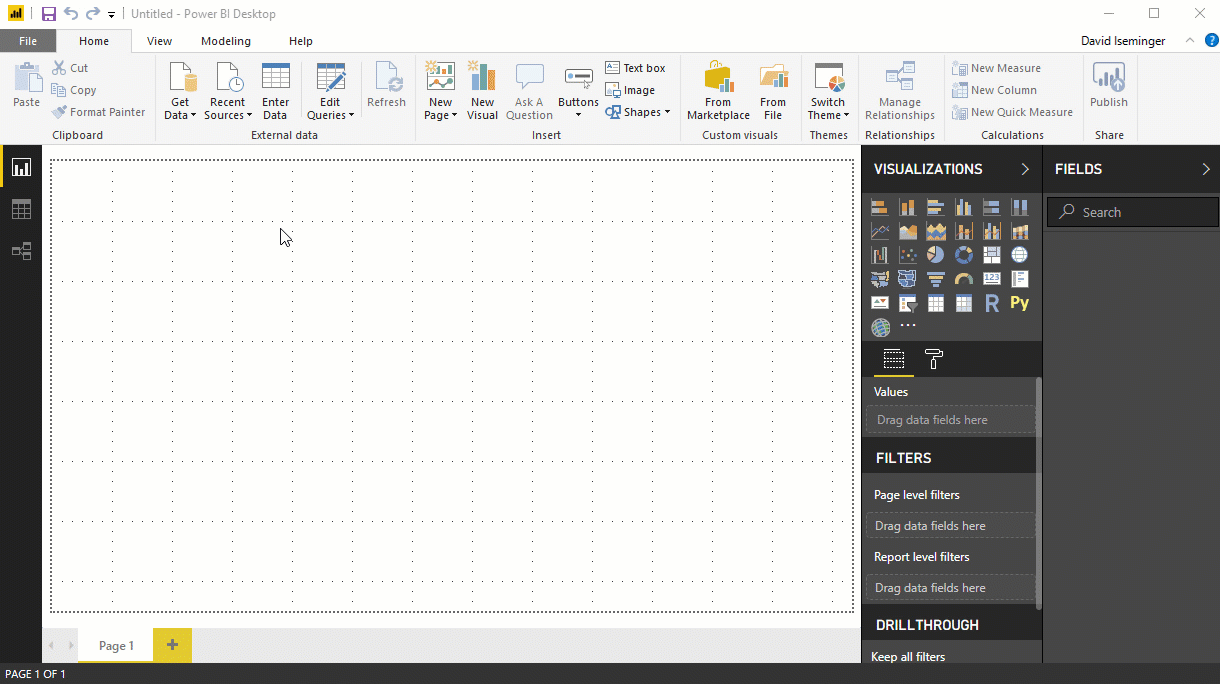

Now press Done in the Advanced Editor Window, and just change the name of the Query to fnImportExcel. This part is CASE SENSITIVE!!!!! So be careful to replace the parts correctly. Then we need to change the filepath in line three and the name of the sheet with the parameters we named. Then an equal sign followed by the “ greater-than” sign. So Parenthesis, the name of the first parameter followed by comma and the name of the second parameter and closed parenthesis. Ok, the first thing we do, is to add a blank row above the let command and write Since our goal is to create a function that could be applied to all files, we need to remove the specific data and make it general. To start this off, we go to View/Advanced Editor and this will open up the Advanced Editor Window. This brings us to phase 2, creating the function with two parameters, filepath and Sheet Name. Don’t close the Query we created because we’re going to need it in step two, where we’re going to change this Base Query into a Power Query function. If you didn’t change that, you must input the name of the last step that you see in the APPLIED STEPS. Where Value in the parenthesis points to the name of the last step. To wrap this Base Query up, we choose the fx again and this time we write a simple formula The name I will give to this step is Value.

This is done by right clicking the last step in the APPLIED STEPS window on the right and selecting Rename. Now that we have the value we need, we’re just going to rename the last step (not necessary, but will make things easier). This means that 0 parameter gives you the first value, 1 gives you the second and so on… To understand this, you should know that Power Query has a 0 based system. The syntax is classic M, but the 8 might take you by surprise, since it was obvious that this value was in row 9. We will achieve this by pressing the fx button in the formula bar (if you don’t see the formula bar, you can turn it on by ticking the formula bar on the View tab)Īnd then adding the to what was there by default.Īfter you enter this, you will get the desired value. So just to keep the goal in mind, we need Cell C9 which at this point is number 64 in column Column3. Then choose the Special Sheet in the Navigator followed by the Edit command on the bottom right. I will choose File1.xlsx, so if you chose differently some steps may differ in view. Then find the folder and choose any of the Excel files. So we start in a blank Excel file and launch the Power Query ( Data/New Query in Excel 2016)/ From File/ From Excel ( From Workbook in Excel 2016) To wrap things up, we use our function on the right Sheets of the right files and create the desired column. Unzip all files to one folder and remember the folder location since we will need that further along the line.Īnd just for reference, and so we can keep our bearing at all times, here are all the steps needed for this to work If you want to follow along, you can get the files here. We start with a folder of Excel files (I also planted a txt document in there just for fun)Īll Files have a different number in cell C9 of a sheet called Special Sheet. This characteristic shall be now listed as “Characteristic A”. Is there any chance to pull the values from a specific range of equally looking Excel files (all forms) and list them?Įxample: The cell C9 of all forms contains one product characteristic. I will draw inspiration from the last comment posted bellow the post mentioned above that goes like this This requires a few extra techniques and some high level Power Query stuff, so I decided that rather than trying to fit it all in a comment section of that post, I would rather do an incognito blog post. Almost all comments referring to the mentioned blog post asked for exactly this, how do I do it with Excel files. This post is obviously not regular, since it’s not Tuesday (now I feel like Julianne Moore in Laws of Attraction) J but it’s a spinoff of a post I wrote in February of 2015 called Get Data From Folder with Power Query. So the final step of Get Data From Folder will have to use a function of more than just one parameter.

There is a key difference here since Excel files are different than TXT files in a way that they can contain multiple Sheets and Tables.
#Get power query for excel 2016 mac how to
Whereas that post was about getting data from multiple TXT files within one folder, this one will tell you how to get data from folder full of Excel files. I recently posted on how to make a process of getting data from a folder bulletproof.


 0 kommentar(er)
0 kommentar(er)
